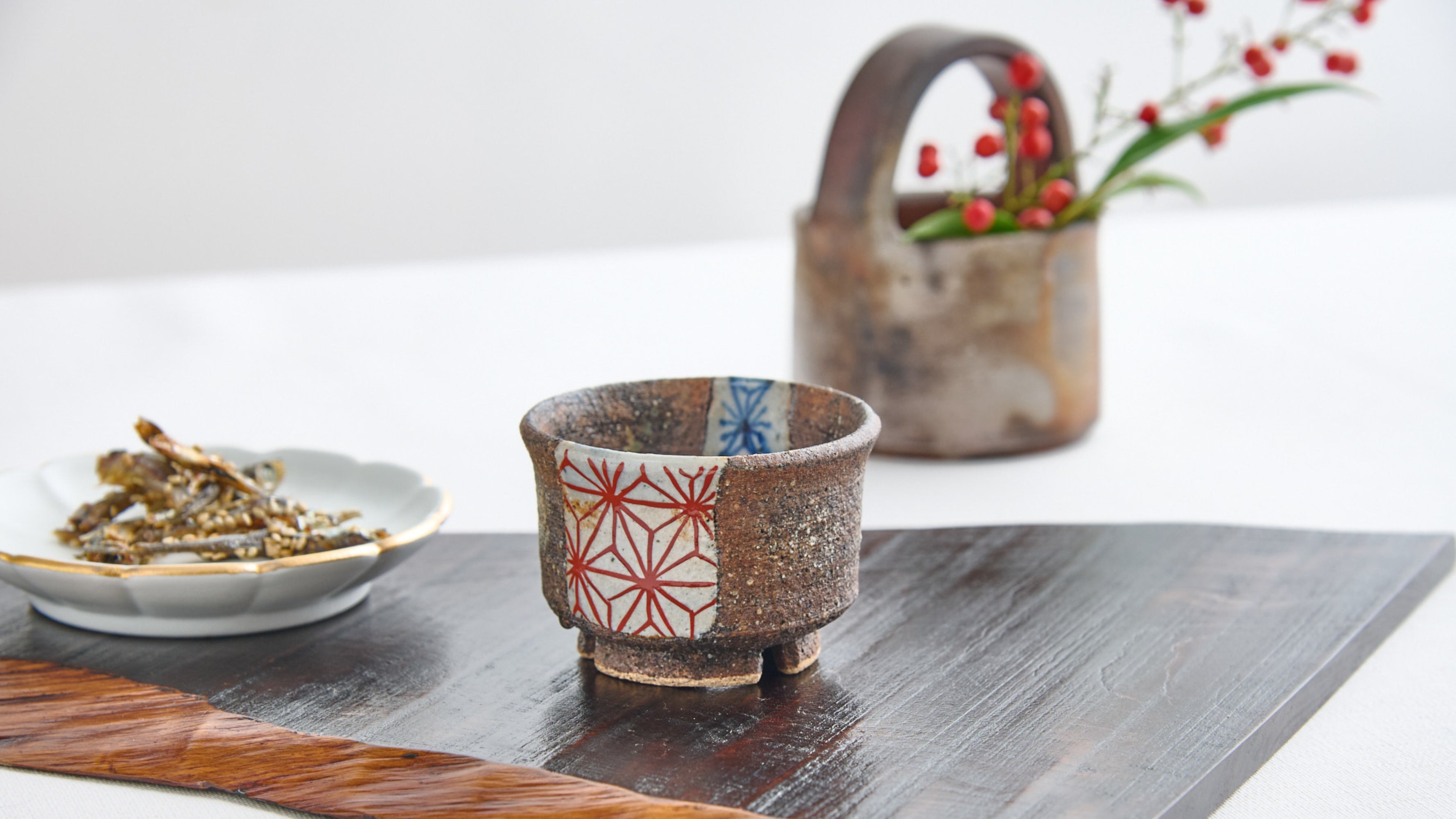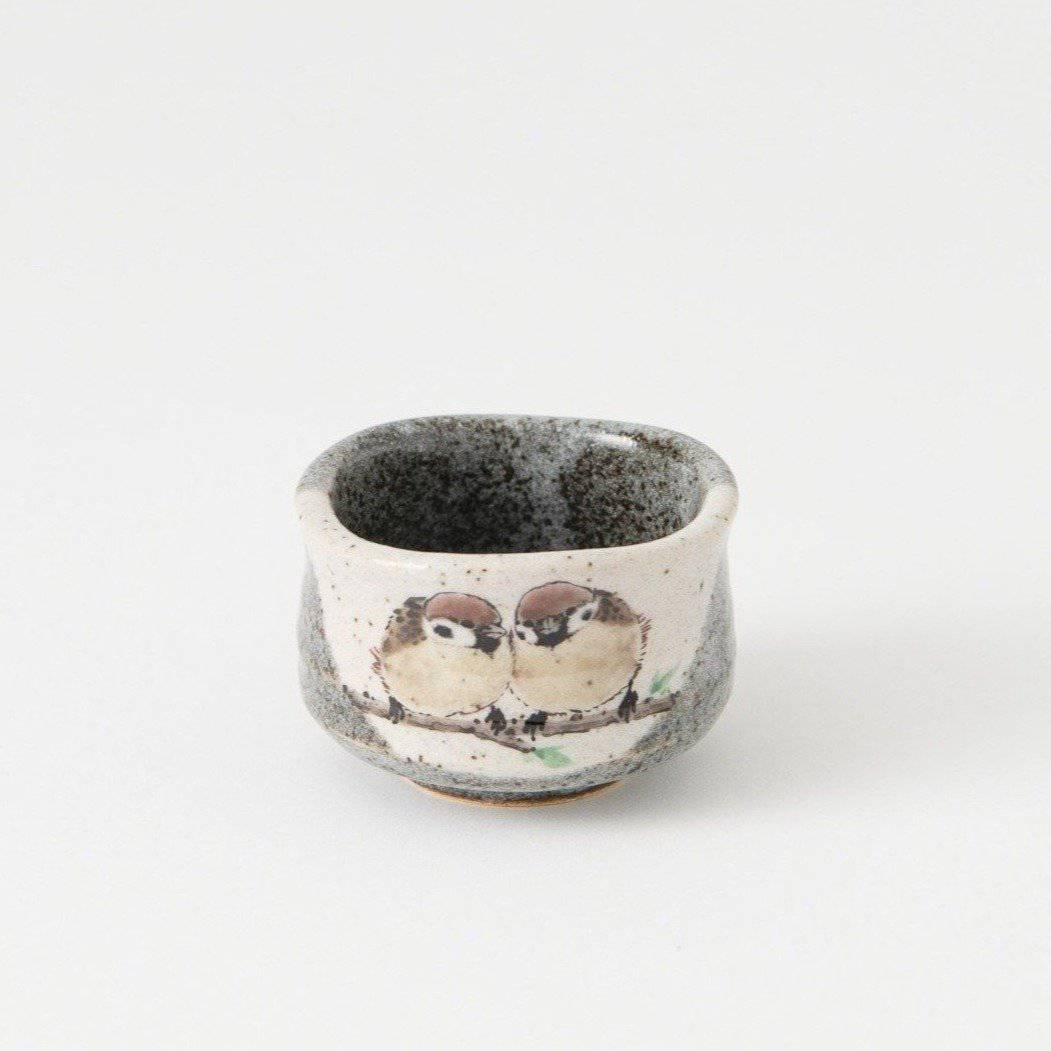
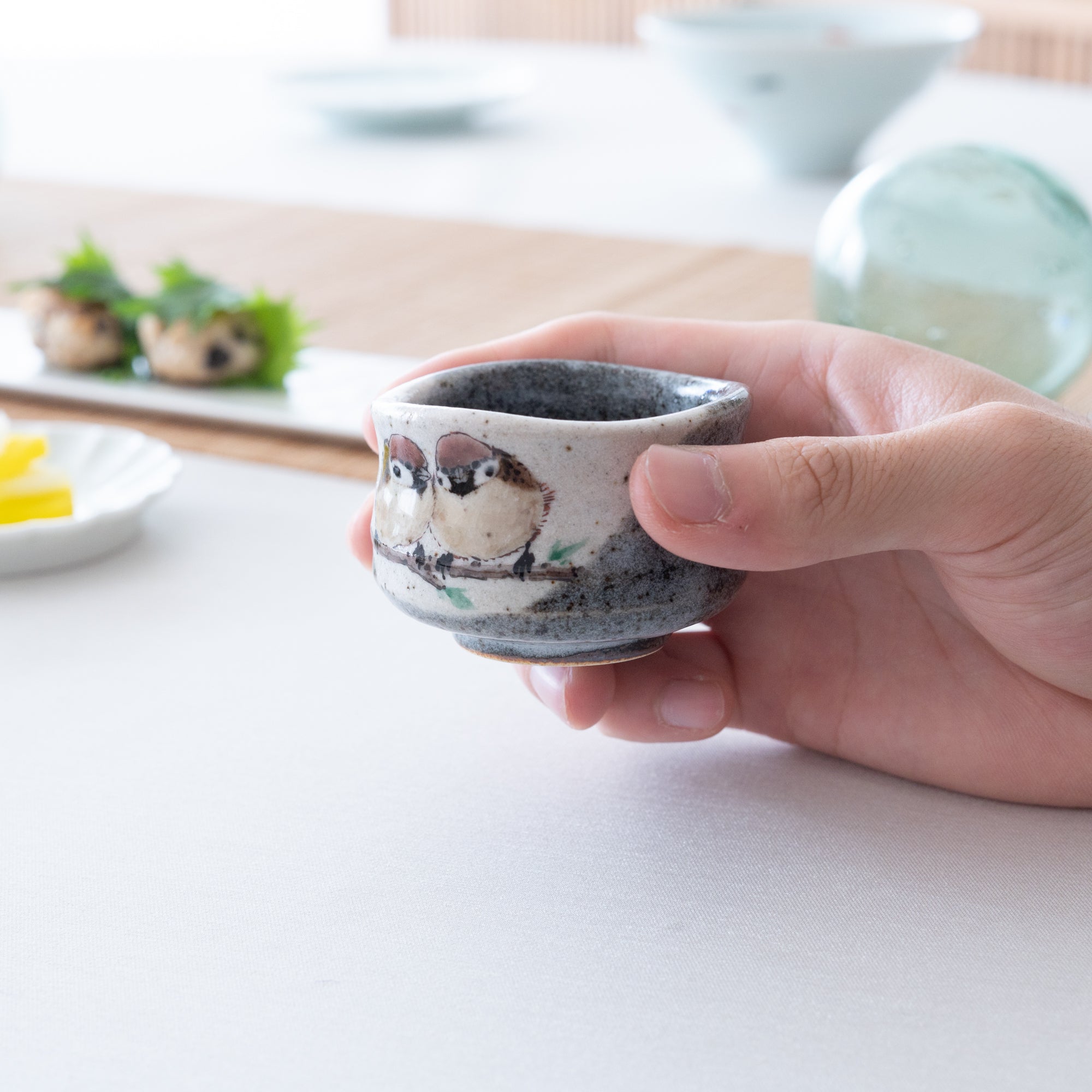
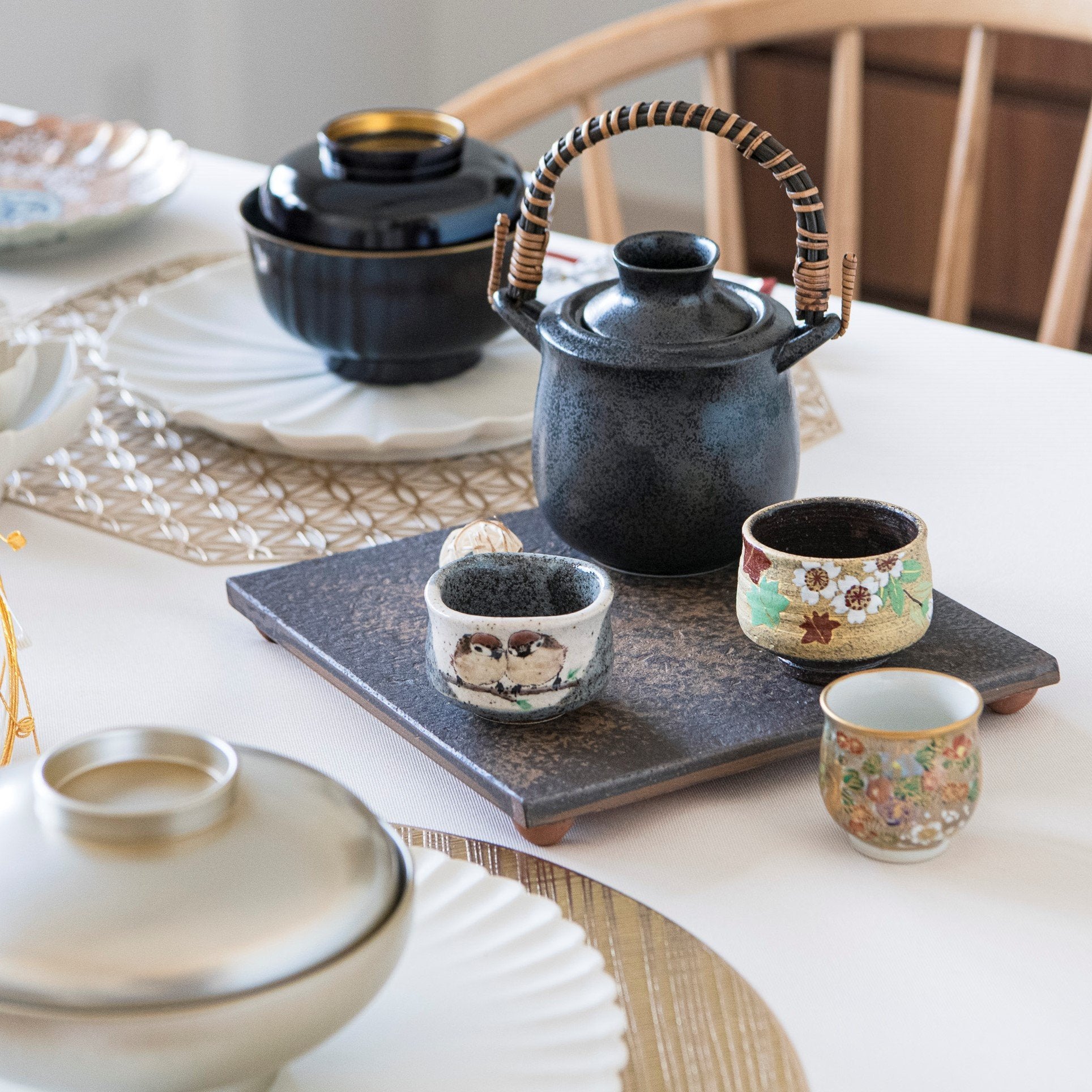
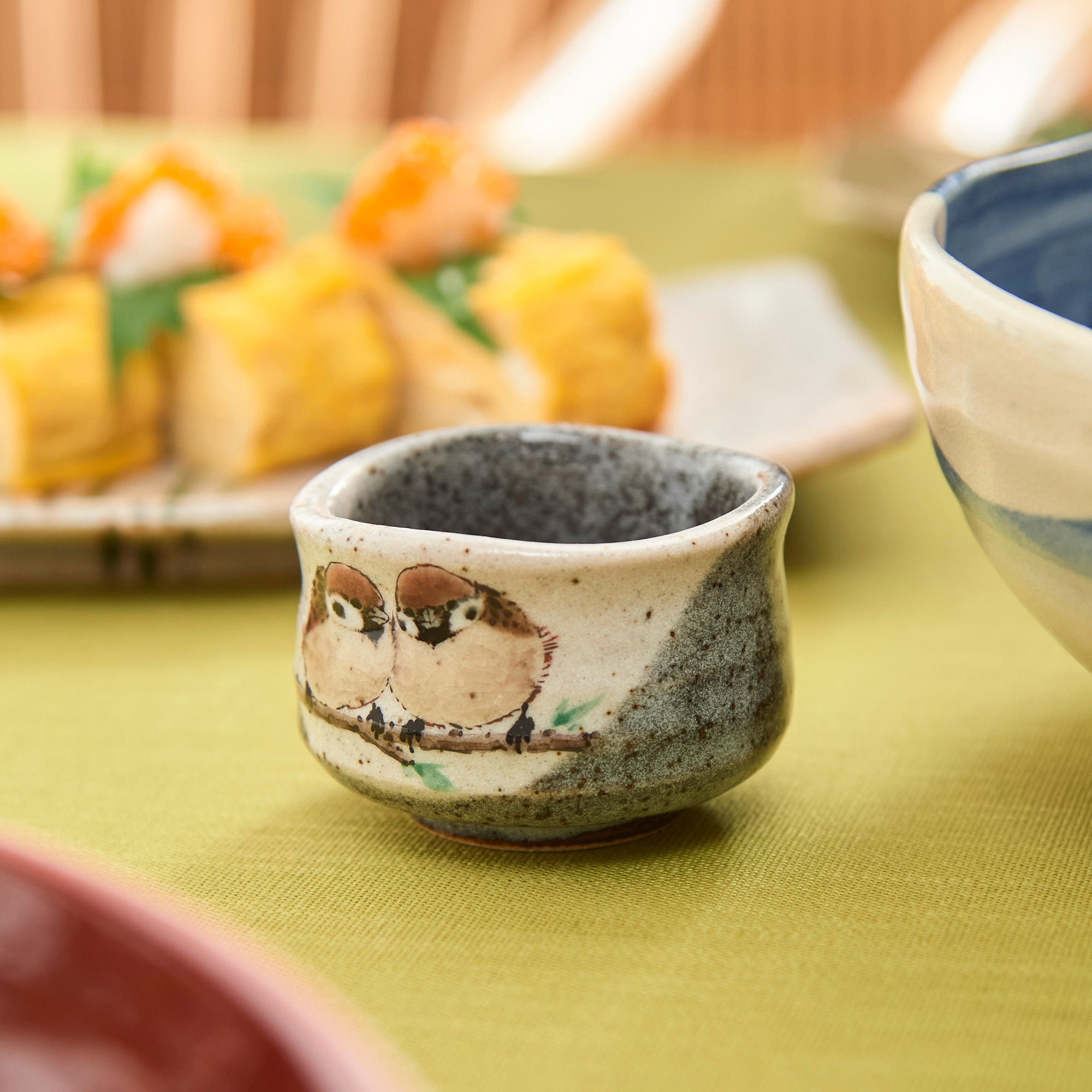
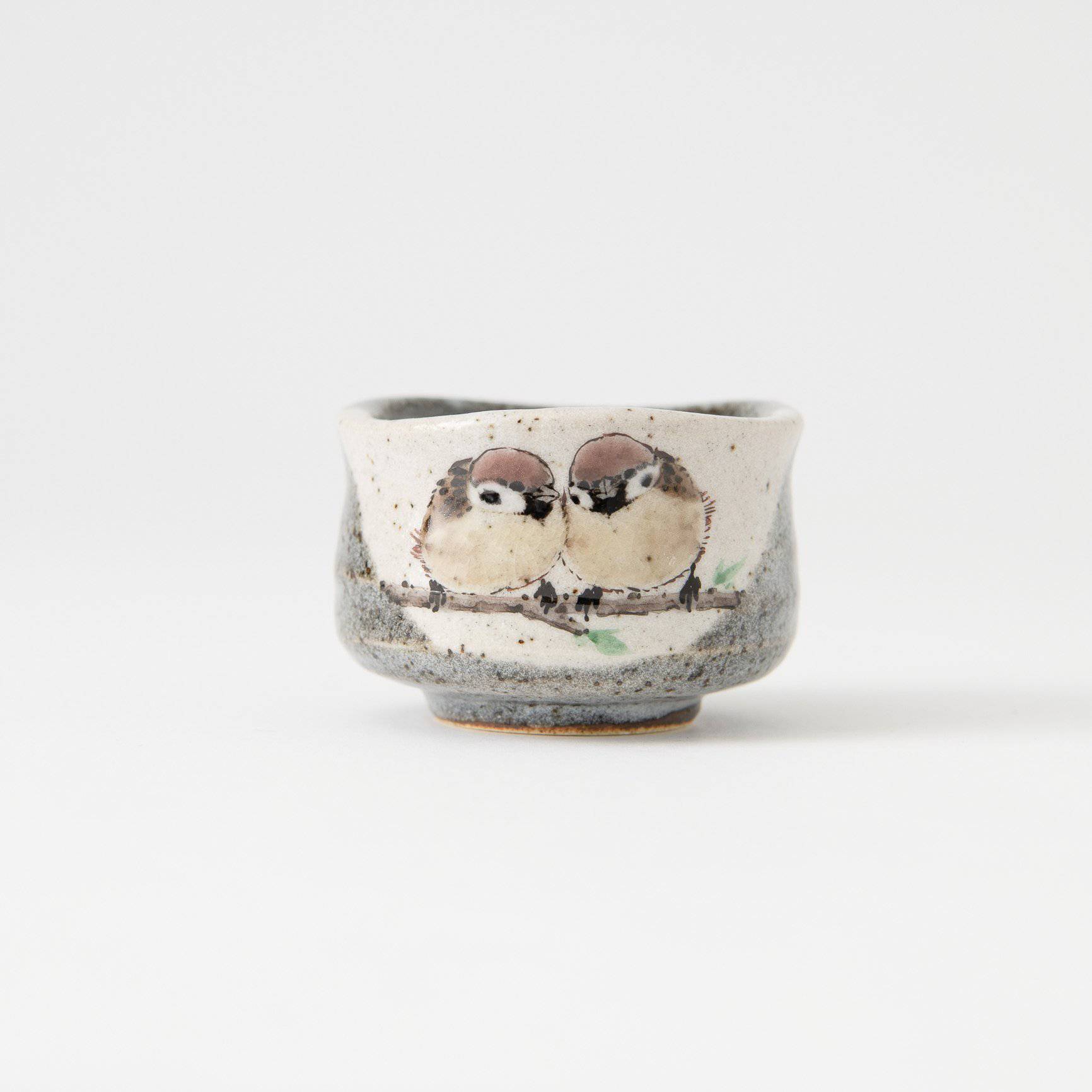
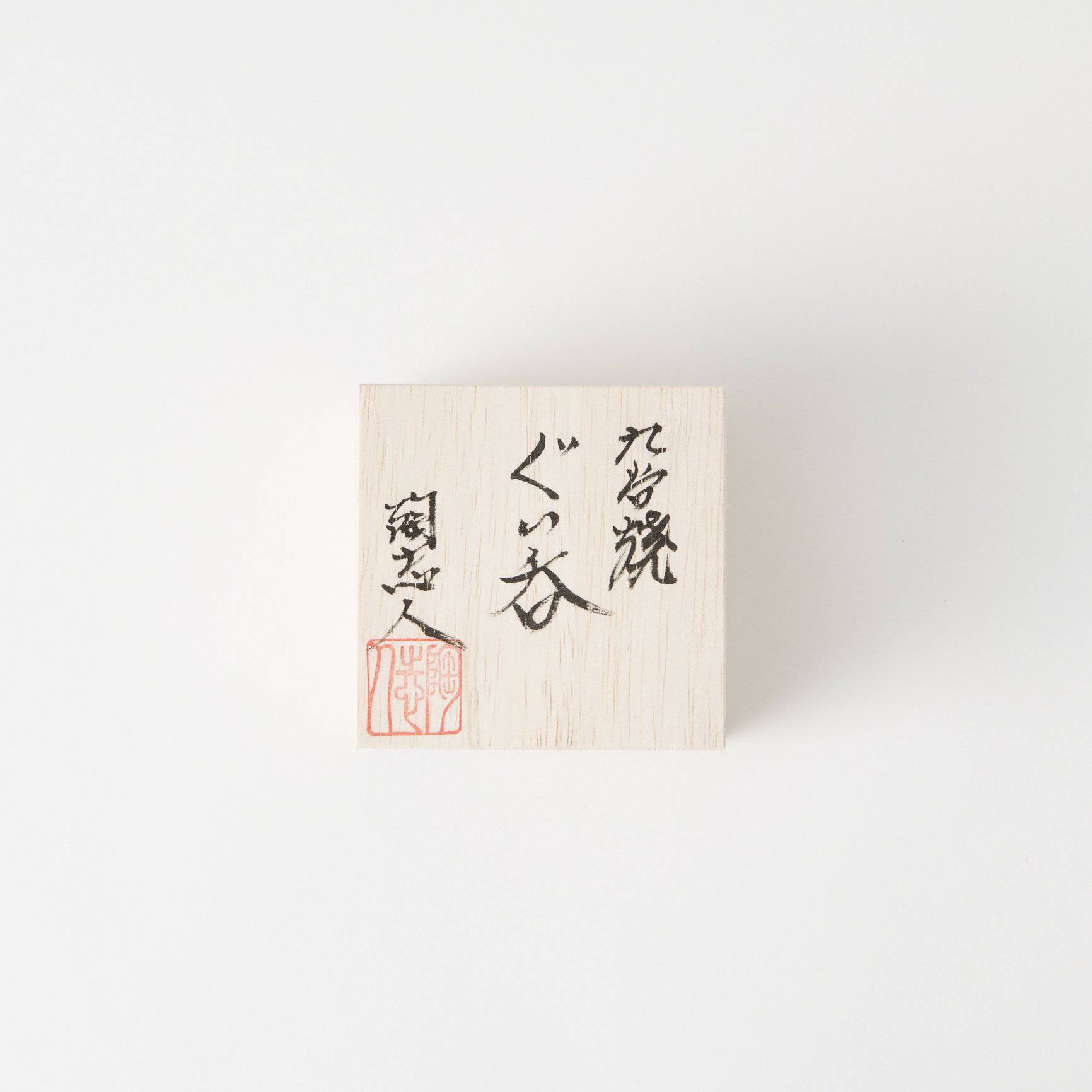

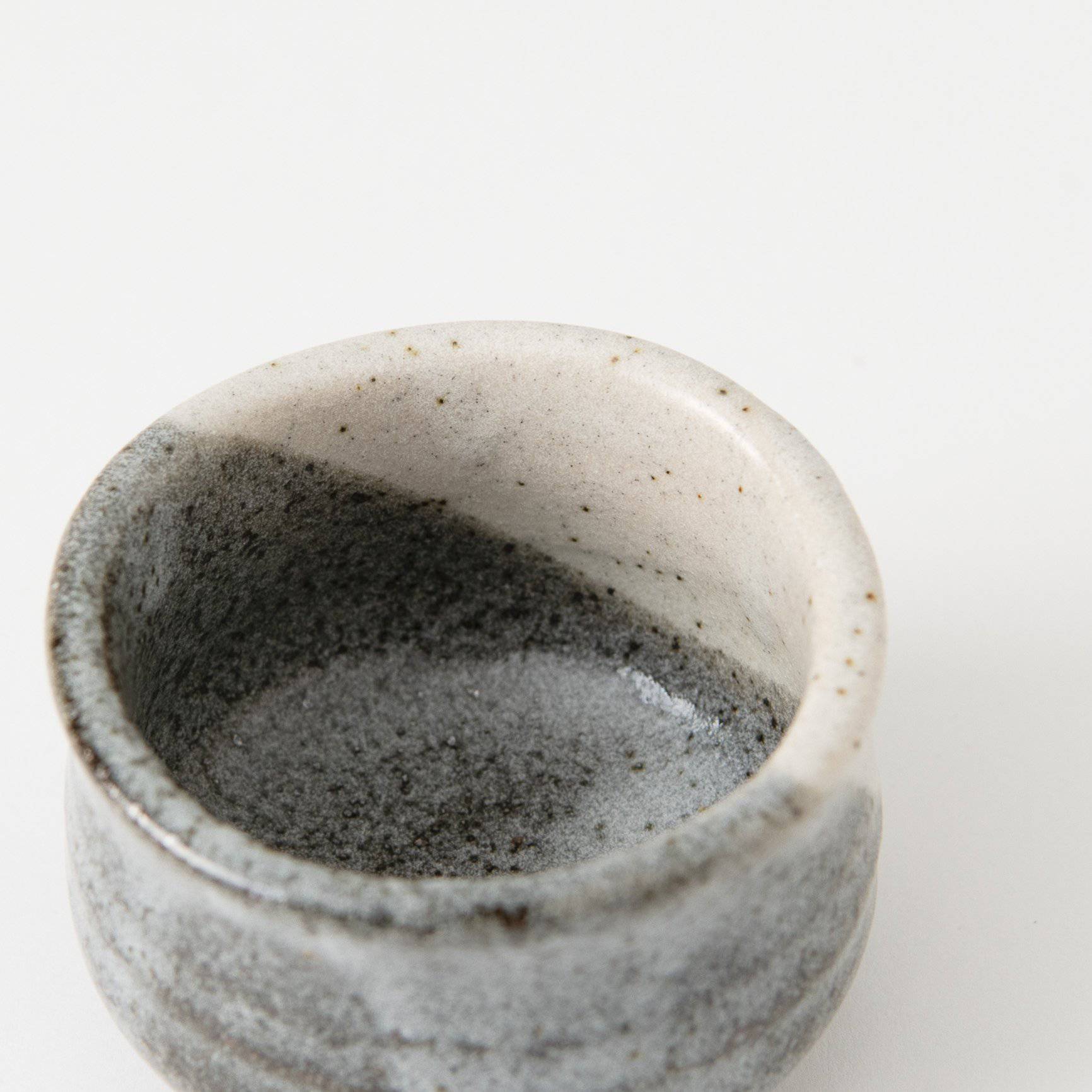
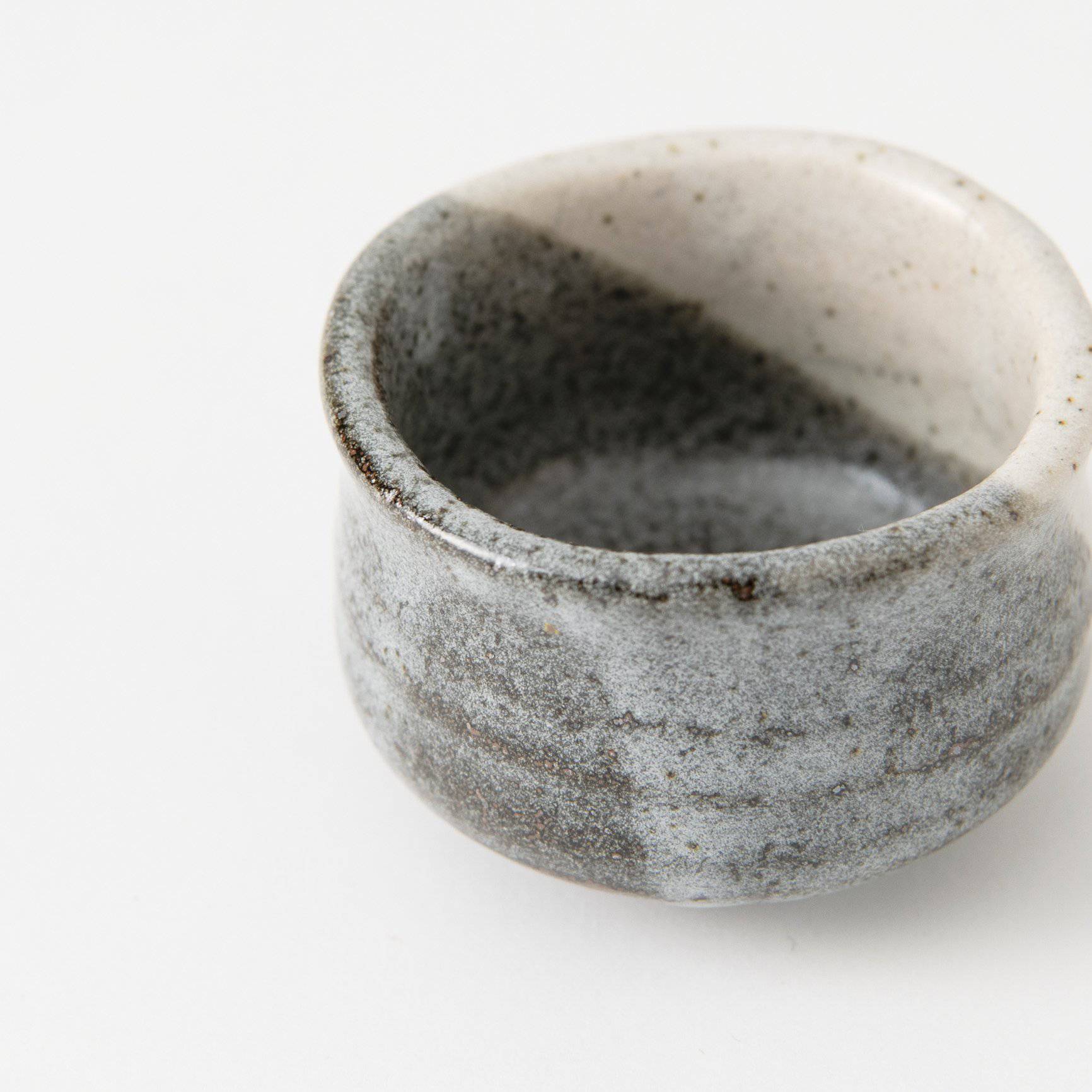
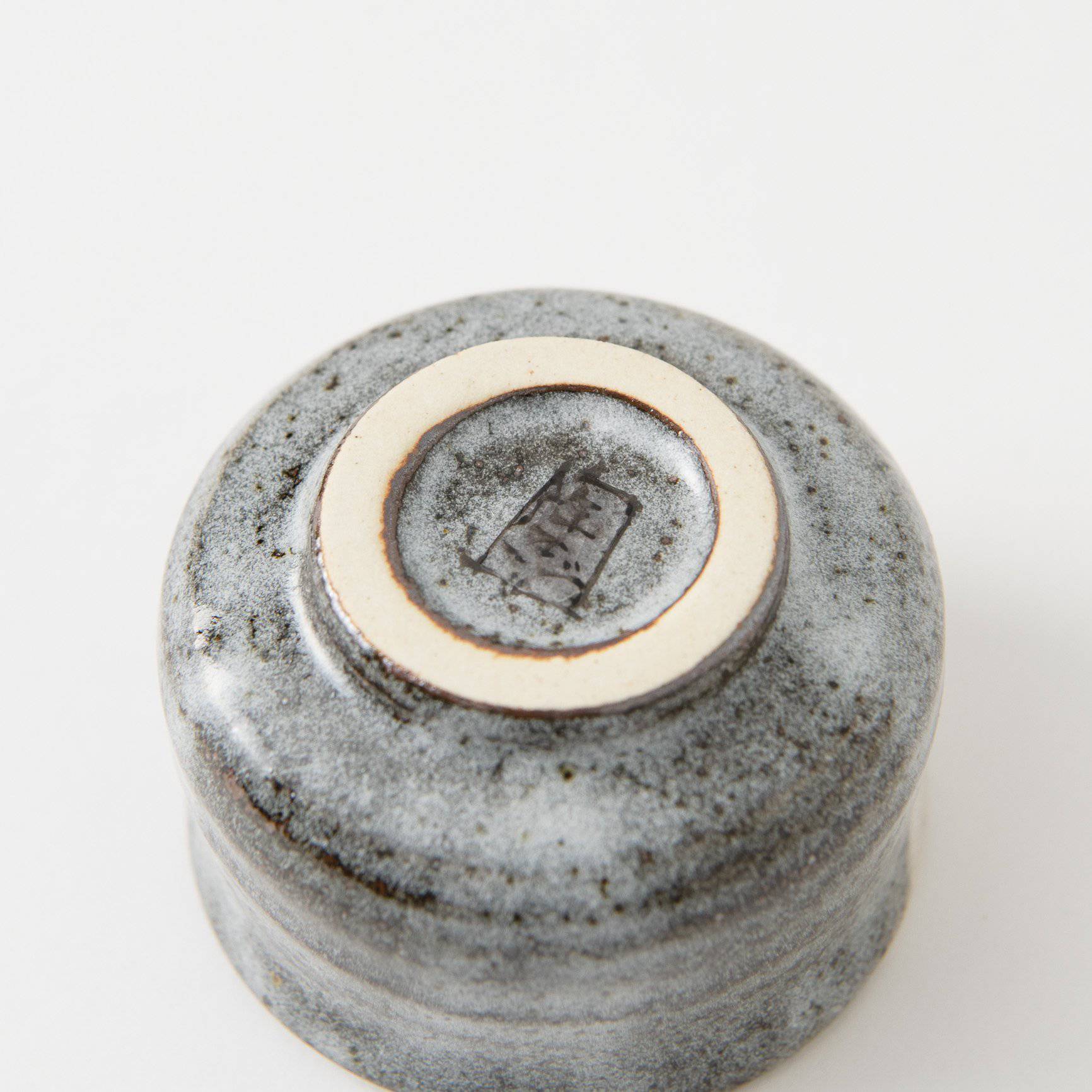

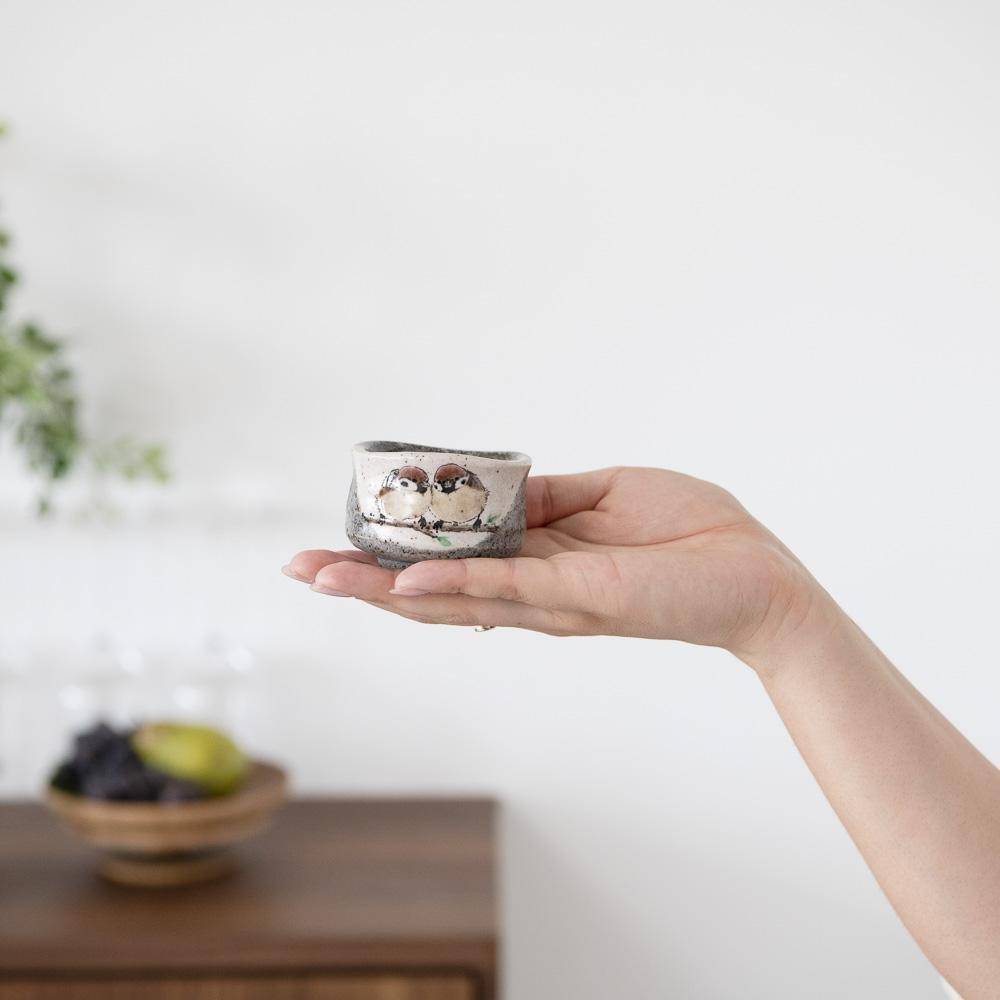
Twin Sparrows Guinomi Sake Cup
Estimated Shipping Widget will be displayed here!
This lovely Japanese sake cup is crafted under the supervision of Nakamura Toshito, whose famous work featuring sparrows is highly appreciated for its delicate and gentle line drawing with neutral colors and detailed design.
The sparrow is believed to ward off bad luck and is a symbol of family prosperity and safety.
It brings a brighten mood in your home bar time. It is perfect for a special occasion when enjoying sake alone or with guests.
Delivered in an original wooden box, it's a perfect gift for your loved ones.
See more items from Toshito Nakamura's Twin Sparrows collections.
DETAILS
| Quantity | 1 |
| Size | D 6.5 cm (2.6 in) x H 5.5 cm (2.2 in) |
| Capacity | 60 ml (2 fl oz) |
| Material | Porcelain |
| Package Type | Wooden box |
| Microwave | Yes |
| Dishwasher | Yes |
Maker / Brand
Toshi Kiln is renowned for its pottery that captures the beauty of Japan’s changing seasons and natural landscapes. Featuring seasonal motifs such as flowers, fruits, trees, and birds, with a particular emphasis on sparrow motifs, its Kutani ware pieces are celebrated for their charming and delicate appearance. The designs are created under the artistic direction of Nakamura Toshito.
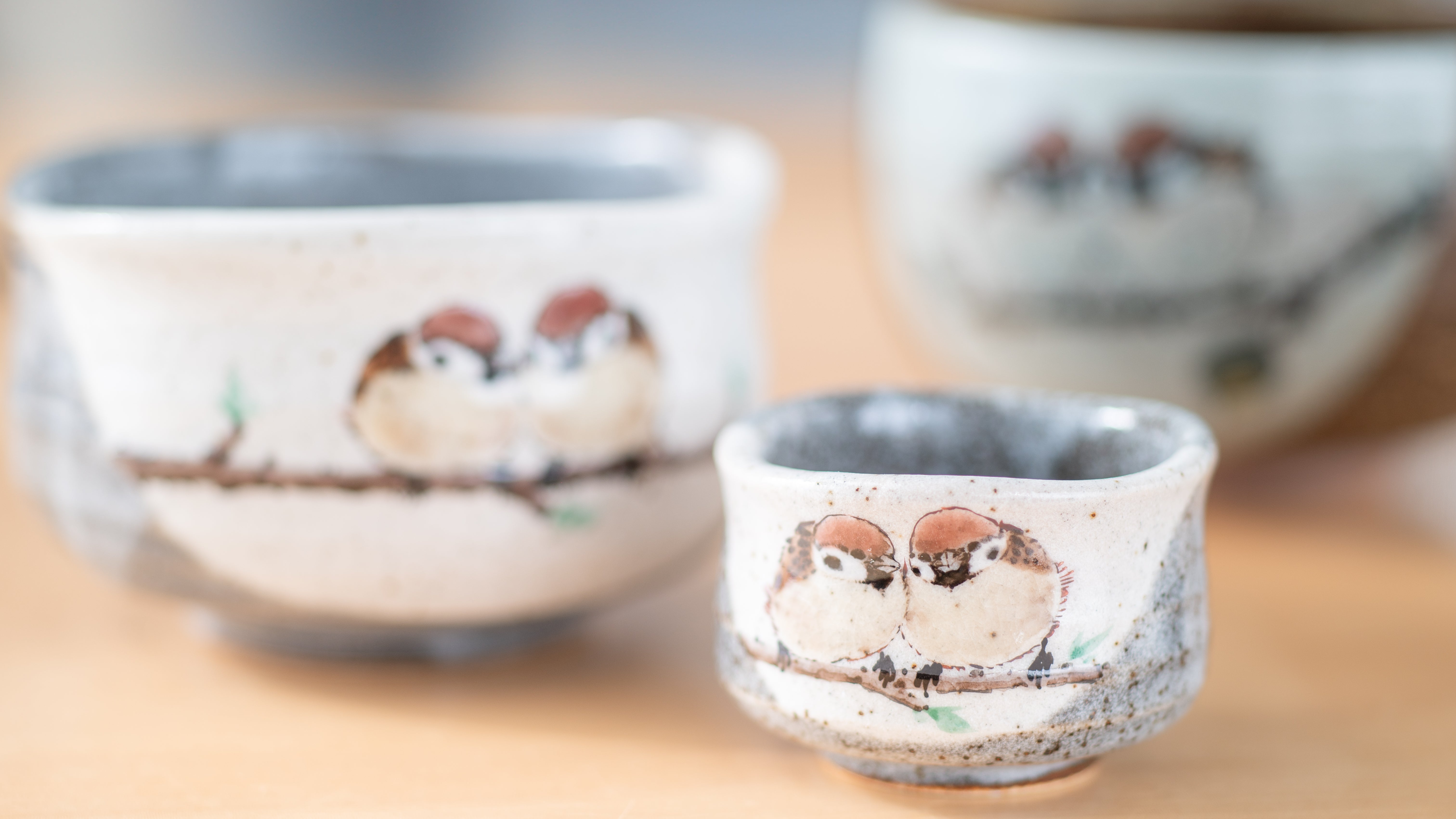
Crafts
Kutani ware is a pottery produced in the Kaga region of Ishikawa Prefecture, with a history spanning over 350 years. It is characterized by the heavy brilliance of the five colors of navy blue, red, purple, green, and yellow that are applied to the bold and daring lines. Its long history has evolved through the tireless efforts and enthusiasm of people who have sought innovation while maintaining tradition.
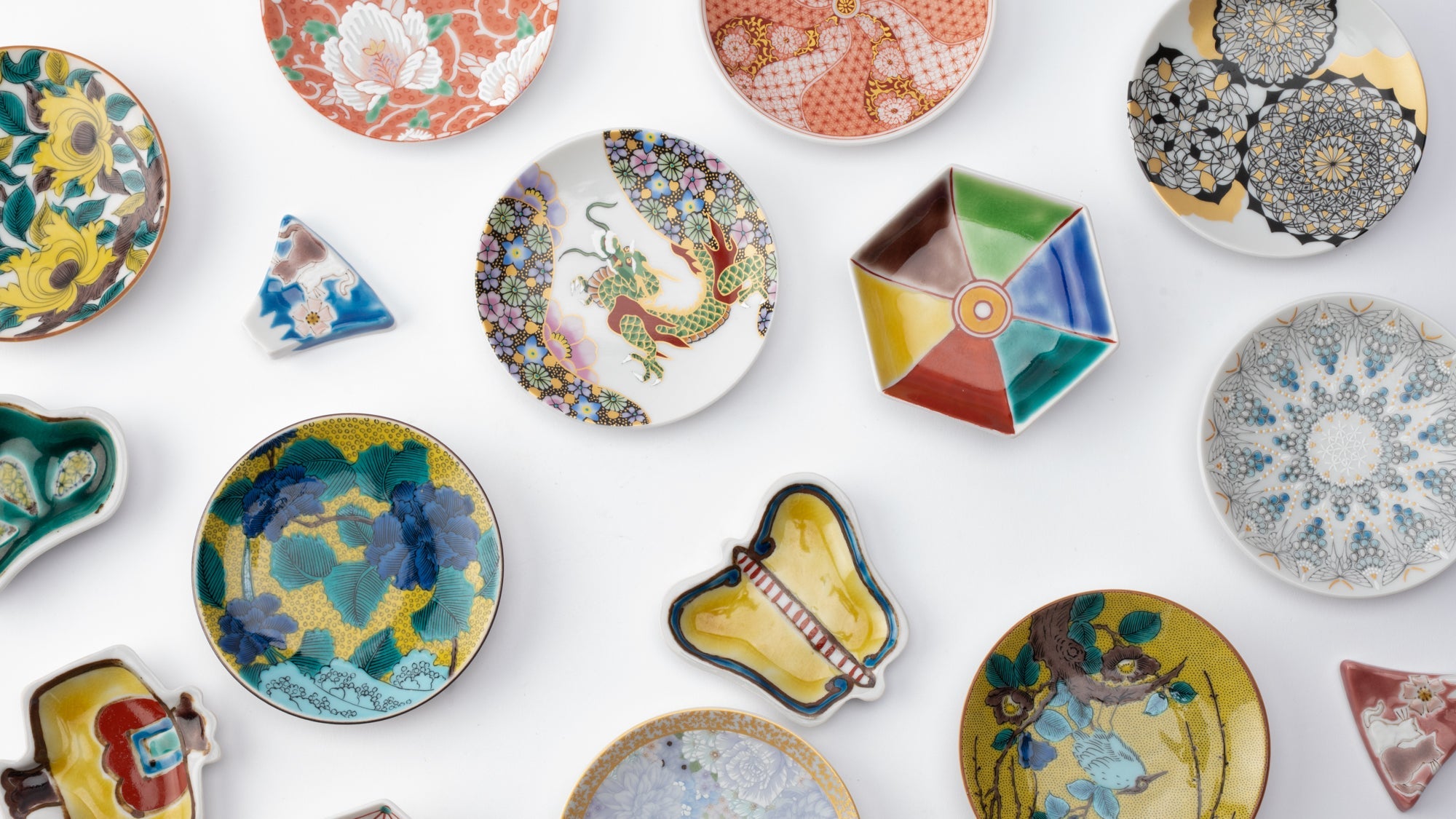
Choose options












Estimated Shipping Widget will be displayed here!
Guinomi
Guinomi are a type of sake cup, smaller than a typical Japanese teacup but somewhat larger than other sake cups. They are often used without a sake carafe, with sake poured directly from the bottle.
Guinomi originally held delicacies during Japanese tea ceremonies, but in time came to be used for drinking sake afterward. They have therefore evolved alongside Japan’s unique tea culture.
